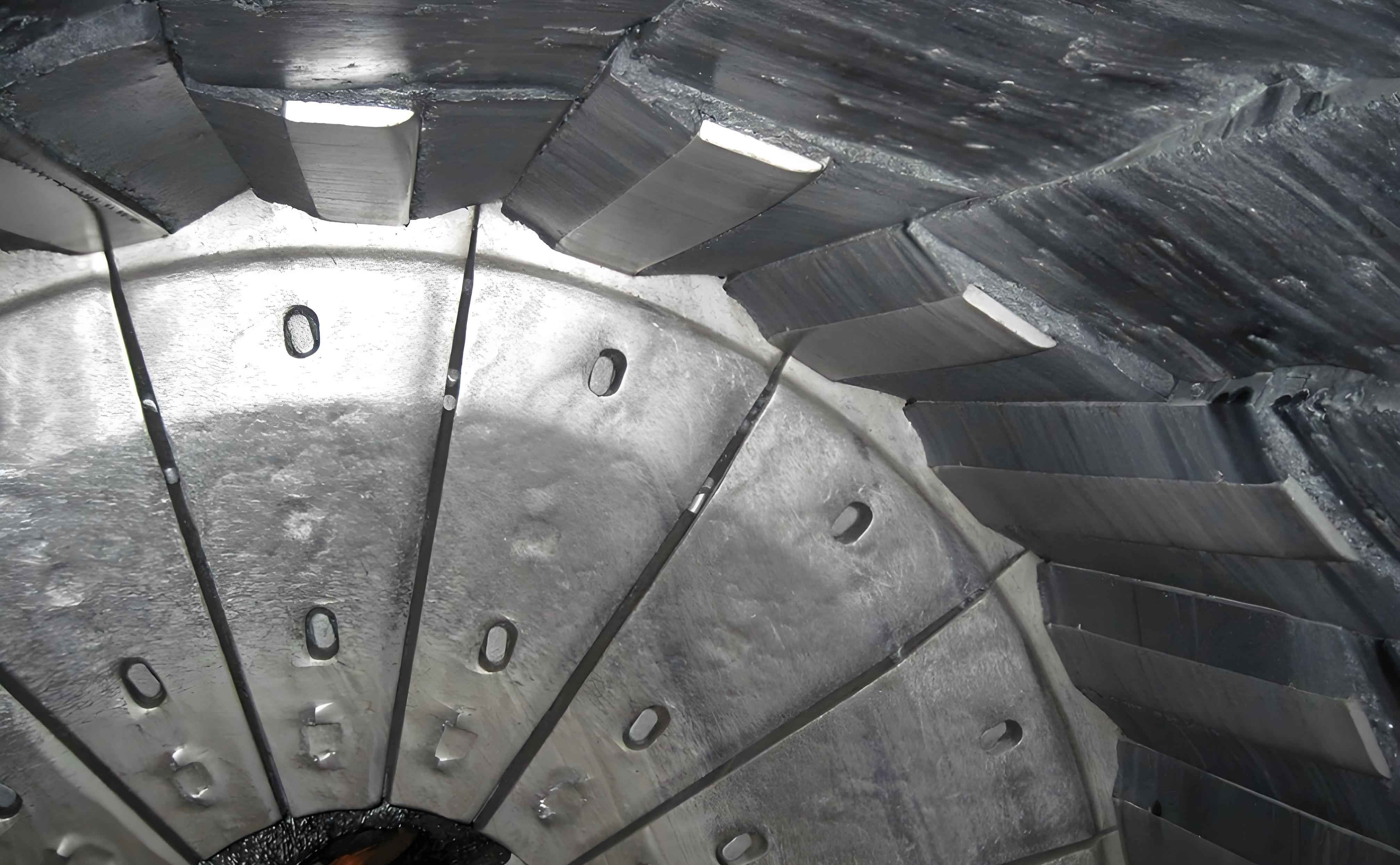1. Introduction
In modern mining operations, the efficiency and reliability of equipment are paramount. As a critical component of rotary crushers, the lining plate plays a vital role in protecting machinery from wear and impact while ensuring consistent productivity. This study focuses on optimizing the lining plate of the PG6089 rotary crusher used in a large molybdenum mine in China. By integrating material science, structural mechanics, and advanced simulation techniques, we aimed to enhance the durability, performance, and cost-effectiveness of the lining plate.

2. Working Mechanism and Challenges of the Lining Plate
2.1 Function of the Lining Plate
The lining plate in a rotary crusher serves dual purposes:
- Protection: Shields the crusher’s inner walls from direct impact and abrasion by ore.
- Efficiency: Optimizes ore fragmentation by creating multiple crushing zones through its geometric profile.
2.2 Operational Challenges
- Short Lifespan: Original manganese steel lining plates lasted only 3 million tons (Mt) of ore processing, requiring replacement every 3 months.
- Harsh Conditions: Extreme temperatures (below -30°C) prolonged maintenance downtime.
- Frequent Failures: Wear, fatigue cracks, and corrosion led to unplanned shutdowns.
3. Theoretical Framework for Optimization
3.1 Material Mechanics
The lining plate’s performance hinges on properties like hardness, toughness, and wear resistance. Key formulas include:
- Wear Rate: W=FAW=AF, where WW is wear rate, FF is frictional force, and AA is contact area.
- Stress Distribution: Analyzed using finite element analysis (FEA) to identify stress concentration zones.
3.2 Structural Optimization
Optimizing the contour design reduces peak stresses and improves load distribution. Parameters considered:
- Discharge Port: Reduced from 175 mm to 160 mm to stabilize output size.
- Crushing Force: Simulated to minimize peak current and prevent overloads.
4. Optimization Strategies
4.1 Material Selection
A hybrid approach was adopted:
- Base Material: High-strength low-alloy steel (HSLA) for balanced strength and cost.
- Surface Treatment: Hard alloy coating (650 HB hardness) to enhance wear resistance.
- Heat Treatment: Improved microstructure for fatigue resistance.
Table 1: Material Properties Comparison
| Property | Original Manganese Steel | Optimized HSLA + Coating |
|---|---|---|
| Hardness (HB) | 280 | 650 |
| Wear Resistance (g/t) | 160 | 50 |
| Impact Toughness (J) | 25 | 45 |
4.2 Contour Redesign
Collaborating with Metso’s engineering team, we used CAD/CAE tools to refine the lining plate’s geometry. Key improvements:
- Constant Discharge Design: Ensured consistent particle size (reduced from 300 mm to 240 mm).
- Stress Simulation: Identified and mitigated high-stress zones (Figure 1).
Figure 1: Stress Distribution in Optimized Lining Plate
(Simulation results showing reduced stress concentrations in critical areas.)
5. Performance Testing and Results
5.1 Field Testing Parameters
- Ore Type: Molybdenum ore (density: 2.64 kg/dm³).
- Feed Size: ≤1000 mm.
- Discharge Port: 165 mm.
- Motor Current: 18–19 A.
5.2 Key Outcomes
- Extended Lifespan: The optimized lining plate processed 14.2 Mt, a 4.7x increase over the original.
- Reduced Downtime: Replacement frequency dropped from 3 to 0.67 times/year.
Table 2: Operational Metrics Before and After Optimization
| Metric | Original Design | Optimized Design | Improvement |
|---|---|---|---|
| Lifespan (Mt) | 3.0 | 14.2 | 373% |
| Replacement Time (h) | 50–72 | 24–36 | 50% |
| Energy Consumption (kW) | 950 | 880 | 7.4% |
6. Economic Analysis
6.1 Cost-Benefit Evaluation
While the optimized lining plate incurred a 20% higher initial cost, long-term savings were significant:
- Maintenance Costs: Reduced by 65% due to fewer replacements.
- Productivity Gains: 15% higher throughput from reduced downtime.
Table 3: Total Cost of Ownership (5-Year Period)
| Cost Component | Original Design ($) | Optimized Design ($) | Savings ($) |
|---|---|---|---|
| Material & Production | 450,000 | 540,000 | -90,000 |
| Maintenance | 1,200,000 | 420,000 | 780,000 |
| Downtime Losses | 800,000 | 340,000 | 460,000 |
| Total | 2,450,000 | 1,300,000 | 1,150,000 |
7. Conclusion
Through systematic optimization of material composition, structural design, and manufacturing processes, the PG6089 rotary crusher’s lining plate achieved remarkable improvements in durability and operational efficiency. The integration of advanced simulation tools and field validation ensured that the design met both technical and economic objectives. This study underscores the importance of holistic engineering approaches in solving industrial challenges, offering a replicable framework for similar applications.
